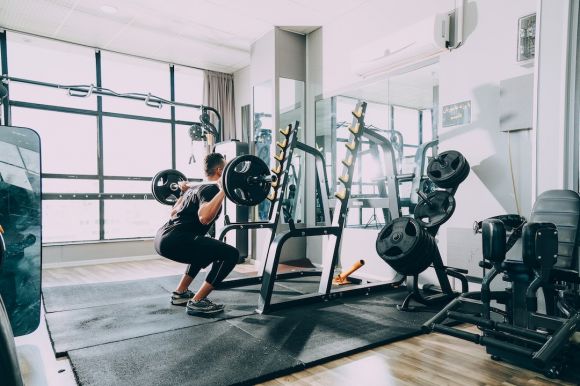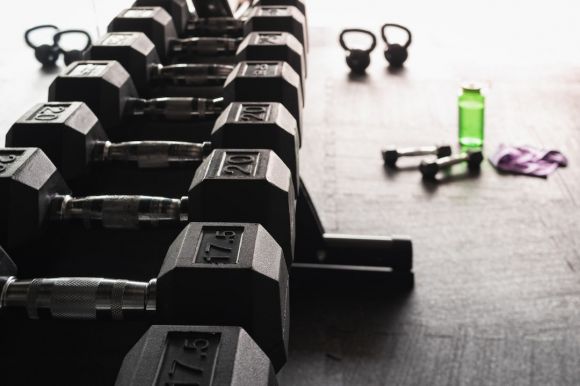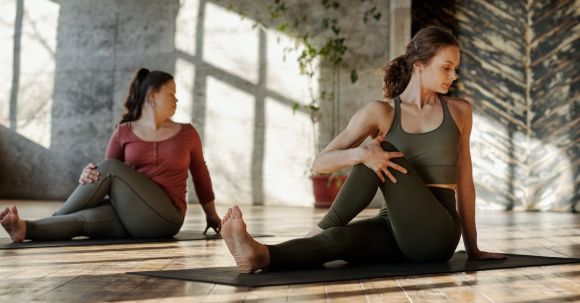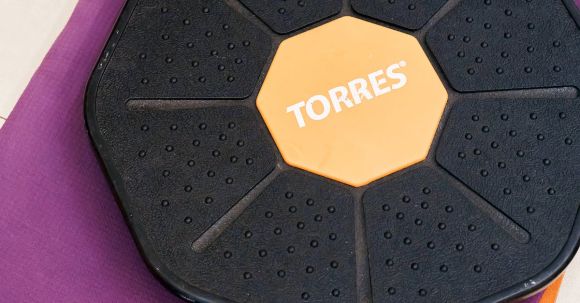Strength training is a fantastic way to improve your overall fitness and build a strong, toned physique. However, many people make common mistakes that can hinder their progress and even lead to injury. In this article, we will explore some of the most common strength training mistakes and provide tips on how to avoid them.
Blog Posts
Maintaining good balance and coordination is essential for daily activities and overall physical well-being. Whether you are an athlete looking to enhance your performance or someone who wants to prevent falls and injuries, improving your balance and coordination should be a priority. In this article, we will explore some practical tips that can help you achieve better balance and coordination.
Strengthen your core muscles
A strong core is the foundation for good balance and coordination. The core muscles, including the abdominals, obliques, and lower back, play a crucial role in keeping you stable and balanced. Engaging in exercises that target these muscles, such as planks, bridges, and Russian twists, can help improve your core strength and stability.Try yoga or Pilates
Yoga and Pilates are both excellent practices for improving balance and coordination. These mind-body exercises focus on body awareness, alignment, and controlled movements. They require concentration and engage various muscle groups, helping to improve balance and coordination over time. Consider joining a yoga or Pilates class or following online tutorials to incorporate these beneficial practices into your routine.Incorporate balance exercises into your workout
Dedicate some time to balance exercises during your regular workout routine. Exercises like single-leg stands, heel-to-toe walks, and standing yoga poses challenge your balance and coordination. Start with simple exercises and gradually increase the difficulty as you progress. Incorporating balance exercises into your workout can help enhance your stability and coordination in various activities.Try tai chi
Tai chi is a traditional Chinese martial art that combines slow, flowing movements with deep breathing and mental focus. It has been shown to improve balance, coordination, flexibility, and overall physical function. Attending tai chi classes or practicing at home with the guidance of online tutorials can help you reap the benefits of this ancient practice.Challenge your senses
Improving balance and coordination involves more than just physical exercises. Challenging your senses can also contribute to better overall stability. Try closing your eyes while performing balance exercises to rely more on your body's proprioception (awareness of body position in space). This will help train your body to rely less on visual cues and develop a stronger sense of balance and coordination.Incorporate balance training into everyday activities
You don't need to set aside a specific time for balance training – you can incorporate it into your everyday activities. For example, while brushing your teeth, try standing on one leg and alternating legs every 30 seconds. This simple activity can improve your balance over time. Similarly, when walking on uneven surfaces, focus on maintaining stability and engaging your core muscles.Maintain a healthy lifestyle
Maintaining a healthy lifestyle can also contribute to better balance and coordination. Regular exercise, a balanced diet, and sufficient sleep all play a role in keeping your body functioning optimally. Additionally, staying hydrated and avoiding excessive alcohol consumption can help prevent dizziness and instability. In conclusion, improving your balance and coordination is essential for overall physical well-being. By incorporating the tips mentioned above into your routine, you can enhance your stability, prevent falls, and improve your performance in various activities. Remember, consistency is key, so make these tips a part of your daily life to reap the long-term benefits of better balance and coordination.
Are you tired of the same old fitness routine? Do you want to inject some excitement and motivation into your workouts? Look no further than Fit on, the innovative fitness app that is revolutionizing the way we exercise. With its wide range of features and user-friendly interface, Fit on is a game-changer for anyone looking to enhance their fitness journey.
Discover a Variety of Workouts
One of the biggest advantages of Fit on is the vast selection of workouts it offers. Whether you prefer high-intensity interval training (HIIT), yoga, or dance workouts, Fit on has something for everyone. With just a few taps on your smartphone, you can access a library of professionally curated workouts that cater to your fitness goals and preferences.Personalize Your Fitness Plan
Gone are the days of one-size-fits-all fitness programs. Fit on allows you to personalize your fitness plan based on your specific needs and goals. By inputting your age, weight, and fitness level, Fit on creates a customized workout plan that evolves as you progress. Whether you want to lose weight, build muscle, or improve your overall fitness, Fit on has you covered.Track Your Progress
One of the keys to staying motivated is tracking your progress. Fit on makes it easy to monitor your achievements and see how far you've come. The app allows you to log your workouts, record your personal bests, and track your overall performance. With this valuable data at your fingertips, you can set new goals and push yourself to new heights.Join the Fit on Community
Exercising alone can sometimes be a lonely experience. Fit on understands the importance of community and provides a platform for users to connect and support each other. Join the Fit on community to share your progress, cheer on fellow users, and participate in challenges and competitions. With the support of like-minded individuals, you'll find the motivation and encouragement you need to stay on track.Stay Accountable with Reminders
We all lead busy lives, and it's easy for our fitness goals to get lost in the shuffle. Fit on helps you stay accountable by sending reminders and notifications to keep you on track. Whether it's a gentle nudge to complete your workout or a notification to drink water and stay hydrated, Fit on is there to support you every step of the way.Access Anytime, Anywhere
One of the biggest advantages of Fit on is its accessibility. No matter where you are or what time it is, Fit on is always available at your fingertips. Whether you're traveling, at home, or at the gym, you can access your personalized workouts and fitness plan with ease. Say goodbye to excuses and hello to a convenient and flexible fitness routine. In conclusion, Fit on is a must-have app for anyone looking to transform their fitness routine. With its wide range of workouts, personalized fitness plans, progress tracking, community support, reminders, and accessibility, Fit on has everything you need to take your fitness journey to the next level. Don't settle for a mundane workout routine when you can have an exciting and dynamic experience with Fit on. Download the app today and embark on a fitness adventure like no other. Your body will thank you!
A strong and well-developed back is not only aesthetically pleasing but also crucial for maintaining good posture, preventing injuries, and enhancing overall athletic performance. However, building strong back muscles is often overlooked or neglected in many workout routines. In this article, we will explore effective strategies and exercises to help you build a stronger and more muscular back.
Understanding the Anatomy of the Back
Before diving into the exercises, it is essential to have a basic understanding of the anatomy of the back. The back is composed of several major muscle groups, including the latissimus dorsi, rhomboids, trapezius, erector spinae, and the smaller muscles of the rotator cuff. Each muscle group plays a unique role in back function and strength, and therefore, it is important to target all of these muscles to achieve optimal results.Compound Exercises for Overall Back Development
Compound exercises are multi-joint movements that engage multiple muscle groups simultaneously. These exercises are highly effective for overall back development and should form the foundation of your training routine. Here are some key compound exercises to include: 1. Deadlifts: Deadlifts primarily target the erector spinae, but also engage the lats, traps, and rhomboids. They are excellent for building overall back strength and enhancing core stability. 2. Pull-Ups: Pull-ups are a challenging exercise that targets the lats, rhomboids, and traps. They are highly effective for building upper body strength and developing a V-shaped back. 3. Rows: Rows can be performed using various equipment, such as barbells, dumbbells, or resistance bands. They target the lats, rhomboids, and traps, and can help correct muscular imbalances.Isolation Exercises for Specific Muscle Groups
While compound exercises are great for overall back development, isolation exercises allow you to target specific muscle groups to achieve a more balanced and sculpted back. Here are some effective isolation exercises: 1. Lat Pulldowns: Lat pulldowns specifically target the latissimus dorsi and are an excellent exercise for building width and thickness in the upper back. 2. Dumbbell Rows: Dumbbell rows target the lats, rhomboids, and traps, and can be performed unilaterally to correct any muscle imbalances. 3. Reverse Flyes: Reverse flyes target the rear deltoids and rhomboids, helping to improve posture and strengthen the upper back.Incorporating Proper Technique and Progressive Overload
To maximize the effectiveness of your back workouts, it is important to focus on proper technique and progressive overload. Using proper form ensures that you are targeting the intended muscles and reduces the risk of injury. Progressive overload, on the other hand, involves gradually increasing the weight or resistance used in your workouts over time. This progressive increase in load stimulates muscle growth and strength gains.Recovery and Rest
Building strong back muscles requires both challenging workouts and adequate rest and recovery. Make sure to give your back muscles enough time to recover between training sessions. Aim for at least 48 hours of rest between intense back workouts to allow for muscle repair and growth.Conclusion: Building a Strong Back for Optimal Performance
A strong back is essential for overall strength, posture, and athletic performance. By incorporating compound exercises, isolation exercises, proper technique, and progressive overload into your training routine, you can effectively build strong back muscles. Remember to prioritize rest and recovery to allow your muscles to repair and grow. With consistency and dedication, you will soon achieve a stronger, more muscular back.
Strength training is a popular form of exercise that can help improve muscle strength, increase bone density, and enhance overall fitness. However, like any physical activity, it is not without its risks. Injuries can occur if proper precautions are not taken. To prevent strength training injuries, it is important to follow a few key guidelines.
Warm-up and Cool-down
Before diving into a strength training session, it is crucial to warm up properly. This can involve performing dynamic stretches, such as arm circles or leg swings, to increase blood flow and prepare the muscles for exercise. A warm-up should last for about 10 minutes and gradually increase in intensity. Similarly, a cool-down period after the workout is essential to gradually bring the heart rate and breathing back to normal. This can be achieved by performing static stretches, holding each stretch for 15-30 seconds.Proper Technique
Using proper technique during strength training exercises is essential for preventing injuries. It is important to maintain good form and posture throughout each movement. This means keeping the spine aligned, engaging the core muscles, and avoiding any excessive twisting or jerking motions. If you are unsure about the correct technique, it is recommended to seek guidance from a qualified trainer or instructor. They can provide valuable feedback and help you make the necessary adjustments to prevent injuries.Gradual Progression
One common mistake that can lead to injuries is trying to do too much too soon. It is important to start with lighter weights and gradually increase the intensity and volume of your workouts over time. This allows your muscles, tendons, and ligaments to adapt and become stronger, reducing the risk of injury. Pushing yourself too hard too quickly can lead to muscle strains, joint pain, and other injuries that can set you back in your training.Appropriate Equipment
Choosing the right equipment is another crucial aspect of injury prevention in strength training. Wear comfortable, supportive shoes that provide stability and cushioning. If you are using weights, make sure they are appropriate for your fitness level and goals. Using equipment that is too heavy or too light can increase the risk of injury. Additionally, using protective gear such as weightlifting gloves or wrist wraps can help reduce the risk of hand and wrist injuries.Rest and Recovery
Giving your body enough time to rest and recover is just as important as the actual strength training sessions themselves. Adequate rest helps prevent overuse injuries and allows the body to repair and rebuild muscle tissue. It is recommended to have at least one or two rest days per week and to listen to your body's signals. If you are feeling excessively fatigued or experiencing pain, it is important to take a break and allow your body to recover.Incorporate Variety
Repetitive movements can increase the risk of overuse injuries. To prevent this, it is important to incorporate variety into your strength training routine. This can be done by alternating between different exercises, using different equipment, or changing the order and intensity of your workouts. By challenging your muscles in different ways, you can reduce the risk of overuse injuries and keep your workouts interesting and engaging. In conclusion, preventing strength training injuries requires a combination of smart training practices and listening to your body. By following these guidelines, you can minimize the risk of injuries and enjoy the many benefits that strength training has to offer. Remember to warm up and cool down, use proper technique, progress gradually, choose appropriate equipment, prioritize rest and recovery, and incorporate variety into your workouts. Stay safe, stay strong, and enjoy the journey towards a fitter and healthier you.
Our digestive system plays a crucial role in our overall health and well-being. When our digestion is not functioning optimally, it can lead to a range of issues such as bloating, constipation, and even more serious conditions like irritable bowel syndrome (IBS). While there are several factors that can affect our digestion, one effective and natural way to improve gut health is through the practice of specific yoga poses. In this article, we will explore some of these poses and how they can benefit our digestive system.
1. Downward-Facing Dog (Adho Mukha Svanasana)
Downward-Facing Dog is a popular yoga pose that not only stretches and strengthens the entire body but also stimulates digestion. This pose helps to increase blood flow to the abdominal area, which can aid in the digestion process. It also helps to relieve gas and bloating by gently massaging the digestive organs.2. Seated Forward Bend (Paschimottanasana)
Seated Forward Bend is a calming pose that stretches the spine and stimulates the digestive organs. This pose helps to relieve constipation and improve digestion by increasing blood flow to the abdominal area. It also helps to relax the mind and reduce stress, which can have a positive impact on digestion.3. Supine Twist (Supta Matsyendrasana)
Supine Twist is a gentle twisting pose that helps to improve digestion by massaging the internal organs and increasing blood flow to the abdominal area. This pose also helps to relieve bloating and gas and can be particularly beneficial for those with IBS.4. Bridge Pose (Setu Bandhasana)
Bridge Pose is a backbend that not only strengthens the back and legs but also stimulates the digestive system. This pose helps to improve digestion by increasing blood flow to the abdominal area and massaging the digestive organs. It also helps to relieve constipation and can be beneficial for those with sluggish digestion.5. Cat-Cow Pose (Marjaryasana-Bitilasana)
Cat-Cow Pose is a gentle flowing sequence that helps to improve digestion by massaging the digestive organs and increasing flexibility in the spine. This pose also helps to relieve tension in the back and neck, which can be beneficial for those who hold stress in these areas.6. Extended Triangle Pose (Utthita Trikonasana)
Extended Triangle Pose is a standing pose that stretches the entire body and stimulates the digestive organs. This pose helps to improve digestion by increasing blood flow to the abdominal area and massaging the digestive organs. It also helps to relieve constipation and can be beneficial for those with digestive issues. Incorporating these yoga poses into your daily routine can have a significant impact on your digestion and gut health. However, it's important to remember that consistency is key. Practicing these poses regularly, along with maintaining a healthy diet and lifestyle, can help to optimize your digestive function. In conclusion, yoga poses can be a powerful tool in improving digestion and gut health. The gentle stretching and massaging of the digestive organs in these poses can help to relieve bloating, constipation, and other digestive issues. By incorporating these poses into your daily routine, you can support your digestive system and promote overall well-being. So, roll out your yoga mat and give these poses a try for a happier and healthier gut.
In today's fast-paced world, finding time to hit the gym and work on our fitness goals can be a challenge. However, thanks to Fit On's online personal training program, achieving a strong and functional body has never been more convenient. With their expert guidance and tailored workout plans, you can reach your fitness goals from the comfort of your own home.
Customized Workout Programs for Every Body
One of the key benefits of Fit On's online personal training is their ability to create customized workout programs for every body type and fitness level. Whether you're a beginner or an experienced fitness enthusiast, their team of certified trainers will design a program that suits your specific needs and goals. By taking into account your current fitness level, any pre-existing injuries or limitations, and your personal preferences, Fit On ensures that each workout is tailored to maximize your results. This personalized approach not only helps you avoid injury but also keeps you motivated to stick with your fitness routine.Virtual Training Sessions with Expert Trainers
Fit On's online personal training program offers virtual training sessions with their expert trainers. Through live video calls, you can receive real-time guidance and support as you workout. This interactive experience allows for immediate feedback and adjustments, ensuring that you are performing exercises correctly and efficiently. Having a personal trainer by your side virtually also adds an extra layer of accountability, making it harder to skip workouts or slack off. Their trainers are highly knowledgeable and experienced, and they will push you to your limits while keeping you safe and injury-free.Access to a Wide Range of Workouts
Another advantage of Fit On's online personal training program is the access it provides to a vast library of workouts. Whether your goal is to build strength, increase flexibility, or improve cardiovascular fitness, you'll find a variety of workouts to suit your preferences. From high-intensity interval training (HIIT) and weightlifting to yoga and Pilates, Fit On offers a diverse range of workouts that can be done with minimal equipment. This variety ensures that you never get bored with your exercise routine and allows you to target different muscle groups for a well-rounded fitness program.Flexible Schedule to Fit Your Lifestyle
One of the main reasons people struggle to stick to a regular workout routine is a lack of time. Fit On's online personal training program eliminates this barrier by offering flexible scheduling options. You can choose the time that works best for you, whether it's early morning, during your lunch break, or in the evening. This flexibility allows you to prioritize your fitness goals without sacrificing other commitments. With Fit On, you have the freedom to design a workout schedule that fits seamlessly into your lifestyle, making it easier to maintain consistency and see long-term results.Achieve Your Fitness Goals with Fit On's Online Personal Training
In conclusion, Fit On's online personal training program is a convenient and effective way to achieve a strong and functional body. With their customized workout programs, virtual training sessions, access to a wide range of workouts, and flexible scheduling options, you have everything you need to reach your fitness goals from the comfort of your own home. Don't let a busy schedule be an excuse anymore - start your fitness journey with Fit On today!
Strength training is a popular form of exercise that involves using resistance to build muscle strength and endurance. Whether you are a beginner or a seasoned athlete, one of the most crucial aspects of strength training is proper form. Proper form refers to executing exercises with the correct posture, alignment, and technique. It may seem like a minor detail, but it can significantly impact your results and prevent injuries. In this article, we will explore the importance of proper form in strength training and how it can enhance your overall fitness journey.
Maximizing Muscle Engagement
Executing exercises with proper form ensures that the intended muscles are being targeted and engaged effectively. For example, when performing a squat, maintaining proper form ensures that the glutes, quadriceps, and hamstrings are being activated. On the other hand, incorrect form can result in the wrong muscles taking over, leading to imbalances and reduced effectiveness of the exercise. By focusing on proper form, you can maximize muscle engagement and make the most out of your workouts.Preventing Injuries
One of the primary reasons why proper form is crucial in strength training is injury prevention. When you perform exercises with incorrect form, you put unnecessary stress on your joints, ligaments, and tendons. This can lead to strains, sprains, and even more severe injuries. By maintaining proper form, you reduce the risk of injuries and create a safe environment for your body to perform at its best. Remember, it's better to do an exercise correctly with lighter weights than to do it incorrectly with heavy weights.Improving Performance
Proper form is not just about preventing injuries; it also enhances your overall performance. When you execute exercises with proper form, you are able to generate maximum force and power. This means that you can lift heavier weights, perform more repetitions, and ultimately increase your strength and endurance. Additionally, proper form allows you to maintain better balance and stability, which is crucial for performing compound movements and progressing in your workouts. By prioritizing proper form, you can continually improve and reach your fitness goals more effectively.Developing Mind-Muscle Connection
Proper form in strength training requires focus and concentration on the targeted muscles. This helps develop a strong mind-muscle connection, which is the ability to mentally connect with and control specific muscles during exercise. By practicing proper form and focusing on the muscles being worked, you can enhance your mind-muscle connection, leading to greater muscle activation and development. This connection also allows you to better understand your body and make adjustments as needed to optimize your performance.Ensuring Longevity
Lastly, proper form in strength training is essential for long-term health and longevity. By using correct technique and posture, you reduce the risk of wear and tear on your joints and muscles. This is particularly important as you age and your body becomes more susceptible to injury and degeneration. By prioritizing proper form, you can maintain the health of your body and continue to enjoy the benefits of strength training for years to come. In conclusion, proper form is a fundamental aspect of strength training that should not be overlooked. It maximizes muscle engagement, prevents injuries, improves performance, develops mind-muscle connection, and ensures long-term health. Regardless of your fitness level, taking the time to learn and practice proper form will elevate your workouts and help you achieve optimal results. So, the next time you hit the gym, focus on your form and reap the rewards of a safe and effective strength training routine.
Starting your day with a burst of energy can set the tone for a productive and fulfilling day. While many people turn to a cup of coffee or a quick breakfast for a morning boost, there is another effective way to jumpstart your day - a home workout. By incorporating a workout routine into your morning routine, you can increase your energy levels, improve your mood, and enhance your overall well-being. Here are some tips to help you energize your morning with a home workout.
Create a Dedicated Space
Before you start your home workout, it's important to create a dedicated space where you can exercise comfortably. Whether it's a spare room, a corner of your living room, or even your backyard, having a designated area for your workout will help you stay focused and motivated. Clear any clutter and make sure you have enough room to move around freely. Consider investing in some basic workout equipment such as dumbbells or resistance bands to add variety to your routine.Set Realistic Goals
When starting a home workout routine, it's important to set realistic goals that you can achieve. Whether your goal is to lose weight, build muscle, or improve your cardiovascular fitness, start with small, attainable goals and gradually increase the intensity and duration of your workouts. This will help you stay motivated and avoid burnout. Remember, consistency is key, so aim to workout at least three to four times a week to see optimal results.Warm-up and Stretch
Before diving into your workout, it's crucial to warm up your muscles and stretch to prevent injuries. A simple warm-up can include marching in place, jumping jacks, or a light jog. Once you're warm, spend a few minutes stretching your major muscle groups, such as your legs, back, and arms. This will increase your flexibility and prepare your body for the exercises ahead.Mix Up Your Routine
To keep your workouts interesting and prevent boredom, it's important to mix up your routine regularly. Incorporate a variety of exercises that target different muscle groups and challenge your body in different ways. This can include bodyweight exercises, such as push-ups and squats, as well as cardio exercises like jumping rope or high-intensity interval training (HIIT). Try new exercises or workout videos to keep things fresh and exciting.Stay Hydrated
During your home workout, it's crucial to stay hydrated. Keep a water bottle nearby and take regular sips throughout your workout. Sweating during exercise can cause dehydration, which can lead to fatigue and a decrease in performance. By staying properly hydrated, you'll maintain your energy levels and maximize the benefits of your workout.Listen to Music
Music can be a powerful motivator during your home workout. Create a playlist of upbeat and energizing songs that will get you in the mood to exercise. Studies have shown that listening to music while working out can increase endurance and distract from feelings of fatigue. So put on your favorite tunes and let the music fuel your workout.Incorporate Strength and Cardio
A well-rounded workout routine should include both strength and cardiovascular exercises. Strength training helps build lean muscle mass, improve bone density, and increase metabolism, while cardiovascular exercises improve heart health and burn calories. Aim to incorporate a mix of both into your routine for optimal results.Conclusion: Energize Your Day
By incorporating a home workout into your morning routine, you can energize your day and set yourself up for success. Create a dedicated space, set realistic goals, and mix up your routine to keep things interesting. Remember to warm-up, stay hydrated, and listen to music to enhance your workout experience. With consistency and dedication, a home workout can be the perfect way to energize your morning and start your day off on the right foot.
A strong core is essential for overall strength and stability in the body. It plays a vital role in almost every movement we make, from simple everyday tasks to intense athletic activities. Developing stronger core muscles not only improves your physical performance but also helps prevent injuries and promotes good posture. In this article, we will explore effective strategies and exercises to help you build a stronger core.









